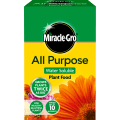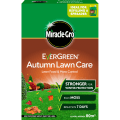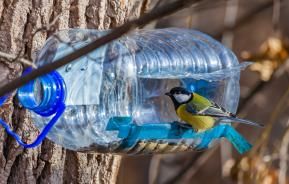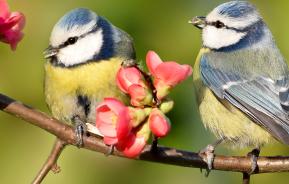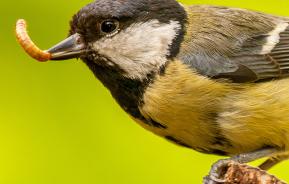Are you looking for wild bird food recipes to attract feathered visitors to your garden throughout the winter months? Here’s some great tips on which ingredients to include, which to avoid, and how to make your own bird cakes the easy way.
Foods to include
While different species can have different preferences, these are chosen with safety for all species in mind…
Fruit
Apples and berries are appetising and nutritious. The former can either be grated, or cut in half and then hung out so that birds can peck at the soft flesh of the fruit. Another good choice is dried fruit, such as currants or sultanas - just be sure to soak overnight to ensure the fruit won’t swell further inside the bird’s tiny stomach, and then chop finely.
Peanuts and peanut butter
Many birds adore peanuts, but be sure to use only unsalted, unroasted varieties - salt can lead to dehydration. And yes, you read that right - peanut butter is also beloved by many of our feathered friends. Crunchy varieties are fine, but stick to a no added salt variety - organic is ideal.
Suet and lard
Either option is nutritious for wild birds, making them ideal choices for a binding ingredient in your home-made fat ball recipe - see below. You should never use fat that’s previously been used to cook with, as the resulting consistency can be highly damaging to feathers.
Seeds
Sunflower and nyger (sometimes listed as ‘nyjer’ or ‘niger’) seeds are both highly nutritious to birds, and each is favoured by different species. Nyger seeds are very small, so not ideal for use in feeders (apart from proper nyger feeders) when dry, but a perfect ingredient for a bird cake. Avoid seed mixes unless they come from a specialist bird food seller.
Foods to avoid
These may surprise you!…
Milk
Birds can’t digest it, which means that at the very least it’s likely to make them sick. In some instances it can even be fatal. A little grated cheese, on the other hand, can be most welcome - go for a mild variety, and check the salt content first.
Stale or mouldy bread
Many well-meaning animal lovers have crumbled a leftover loaf for the birds, but there are actually two problems with this. First, bread doesn’t have any nutritional value for birds, so those species who will eat it (and some will gobble up anything you put out!) aren’t getting any real benefit. Second, certain types of mould can be dangerous to their health, so it’s best avoided altogether.
Make your own wild bird food cake

The recipe
- ⅓ cup sunflower seeds.
- ⅓ cup nyjer seeds.
- ⅓ cup grated cheese.
- ½ cup dried fruit, soaked overnight.
- ½ cup unsalted peanuts.
- 1 cup lard or beef suet.
- Hanging bird feeder(s) suitable for fat balls.
Method
- Chop the nuts and fruit finely.
- Stir into the rest of the dry ingredients until they’re all thoroughly combined.
- Melt your suet or lard in a saucepan over a low heat.
- Remove from the heat and stir in your dry ingredients a little at a time.
- Divide the mixture into portions the size of your hanging bird feeder. Using your hands, mould into tightly packed balls just slightly smaller than the diameter allowed by the feeder.
- Place on a tray covered with greaseproof paper. Once cooled, refrigerate overnight.
Of course, as with all recipes, part of the fun is making your own adjustments. So be creative! As a general rule, one part fat to two parts dry ingredients is the ratio that will create the best consistency, but this will vary depending on the precise mixture you use.
So, for example, a fruitier mixture is likely to be less dry. It’s therefore a good idea to keep a little extra seed on hand just in case. Likewise, when using a wholly nut and seed based dry mix, add it to the melted fat a little at a time until you reach the right consistency.
Something to drink?
While a well-made fat ball or bird cake will keep feathered visitors nourished throughout the winter months, a sumptuous feast isn’t the only thing that will have them visiting your garden. A source of fresh water is essential, and can be hard to find once a frost has set in.
That’s not to say you need to rush out to purchase a heated bird bath, although they’ll certainly appreciate it. Instead, just making the effort to put water out regularly and to check it hasn’t frozen over can make a real difference.
If it does freeze? Pour a cup of hot water over the surface once a day to help melt any ice.

